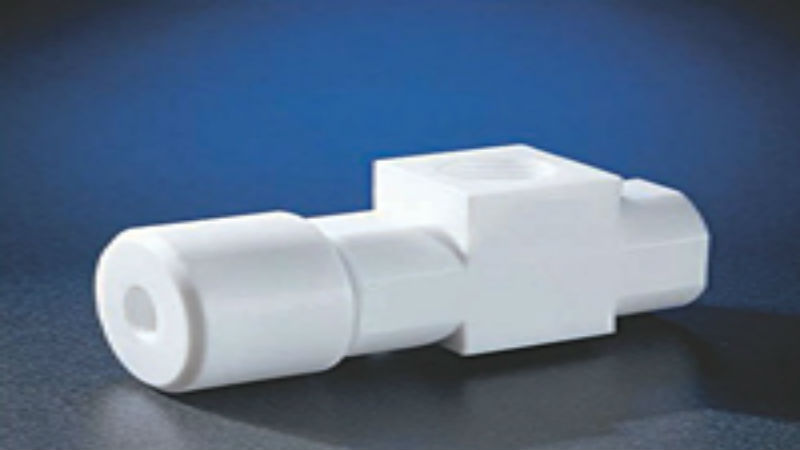Choosing the right valve for the job is more than just a recommendation. Choosing the wrong type of valve, including the material the valve is made from, will result in lower life cycles, greater risk of valve failure and less reliability in the performance of the valve, including a higher risk of leaks.
The Advantages of Teflon
In high purity applications, choosing a Teflon ball valve may be the right option. The choice of Teflon, also known as PTFE or polytetrafluoroethylene, is ideal for the wetted surfaces of valves used in high purity systems. The choice of Teflon prevents any of the media from adhering to the internal components of the valve, and there is virtually no reduction in flow through the valve from friction, allowing for overall better system performance.
The use of Teflon also eliminates concerns with corrosion in the valve. This is true for both typical types of systems as well as those with highly corrosive media. Teflon is a material that is able to stand up to both very hot and very cold operating conditions, which is critical in many types of applications.
The Basics Uses For Ball Valves
A Teflon ball valve is designed like any other ball valve. It uses a ball and a stem, which can be turned 90 degrees manually, pneumatically or electrically to allow the flow of the media through the valve or to shut it off. The ball, with a hole through the center, simply rotates by turning the stem to close off or open the input side of the line.
While a ball valve can be used for full on and off capacity through a line, it can also be used for control of the flow through the valve. On, off and partially open can be easily seen by the operator through the positioning of the exterior handle of the Teflon ball valve.
The design and simplicity of the ball valve are always a consideration. Easy to install, durable and designed for a long-life cycle, these are ideal in virtually all systems.


